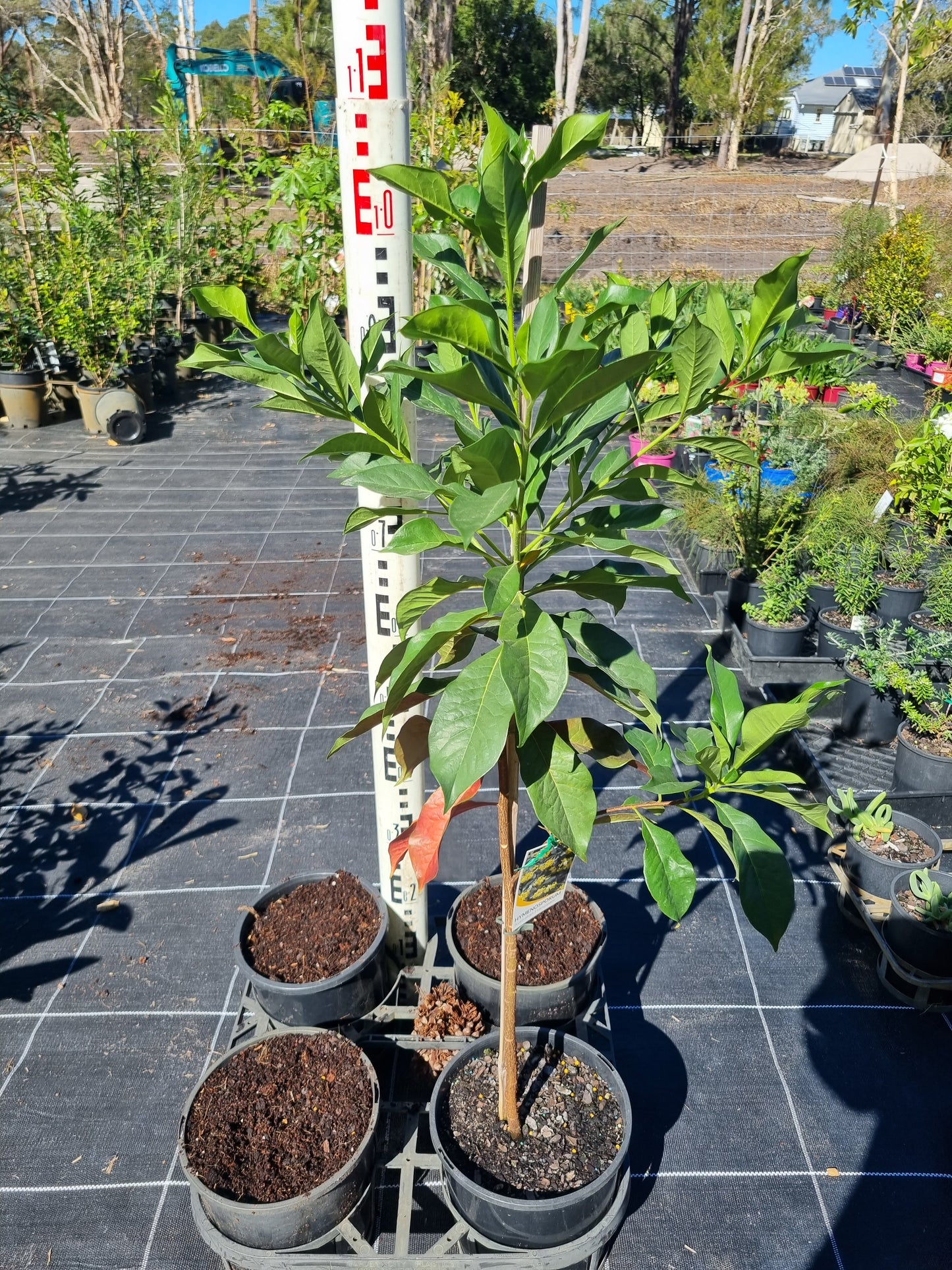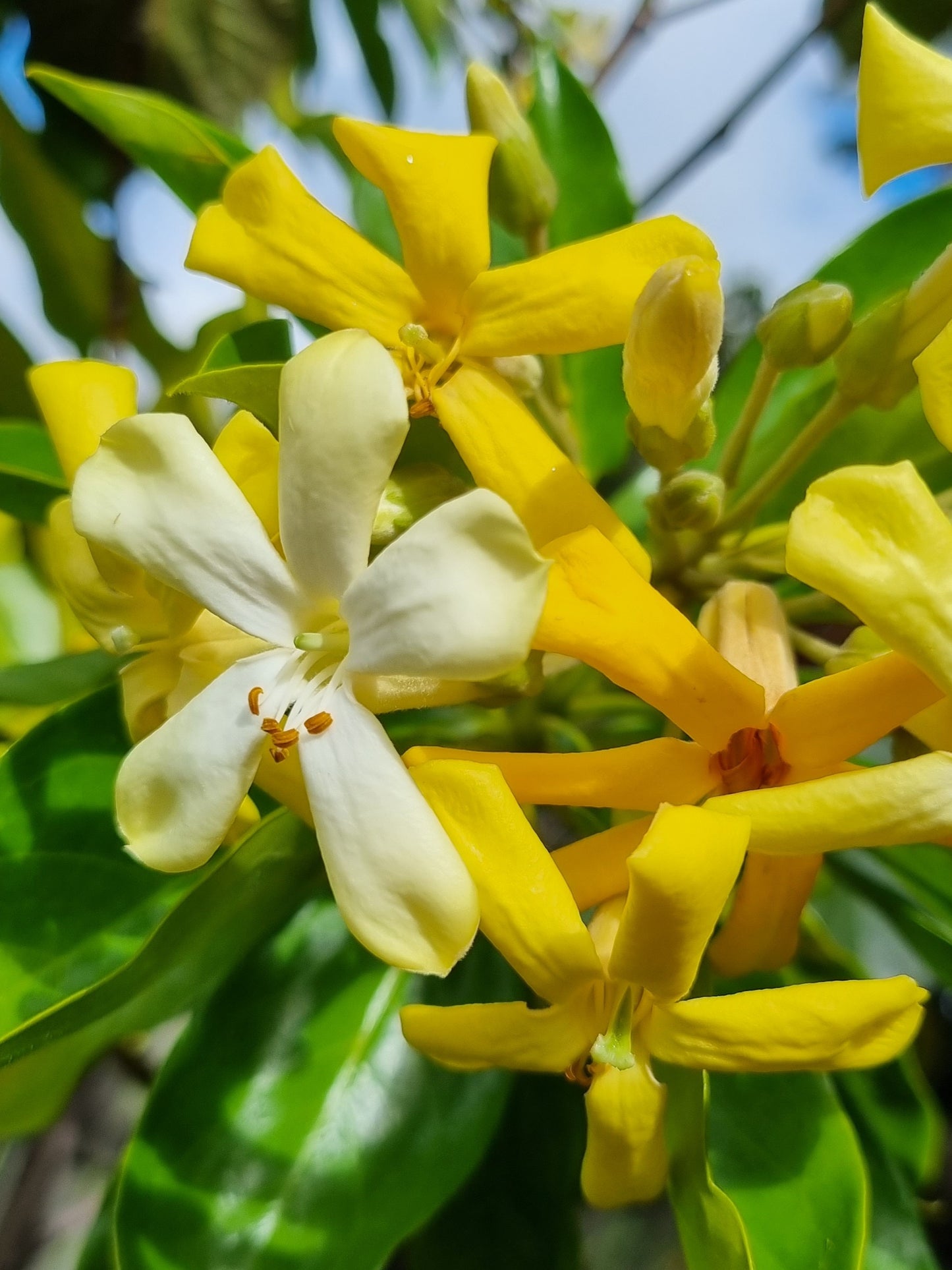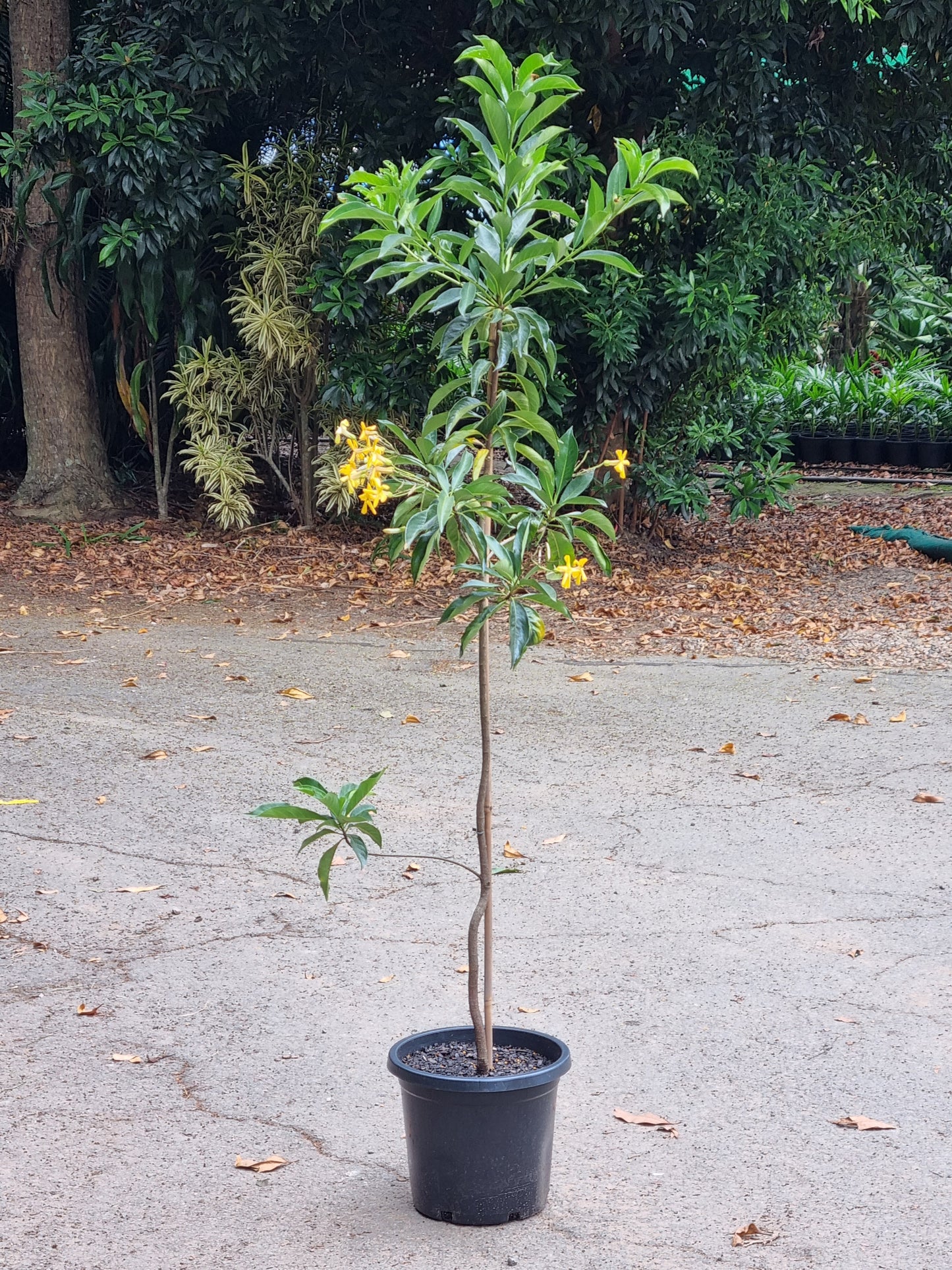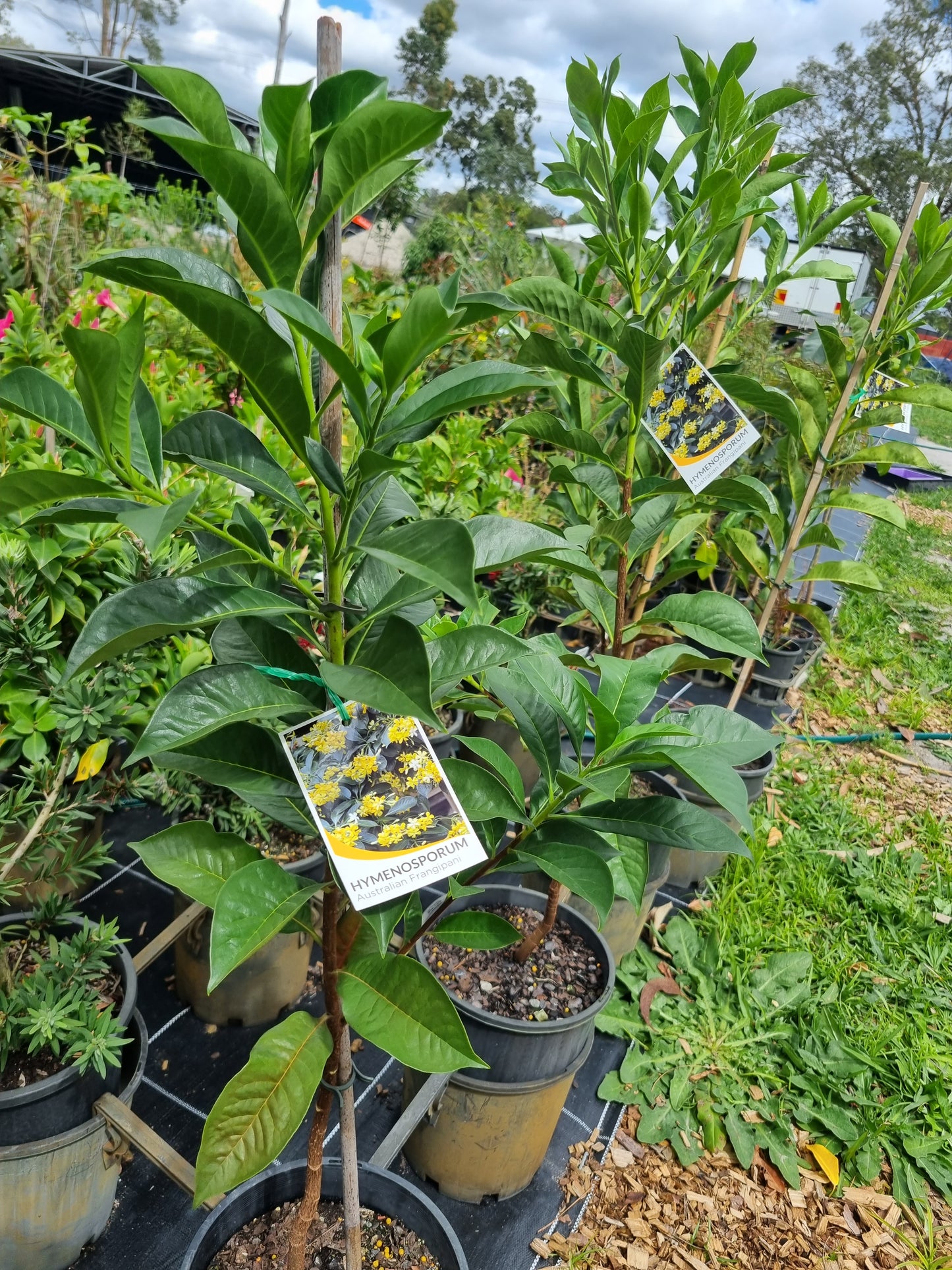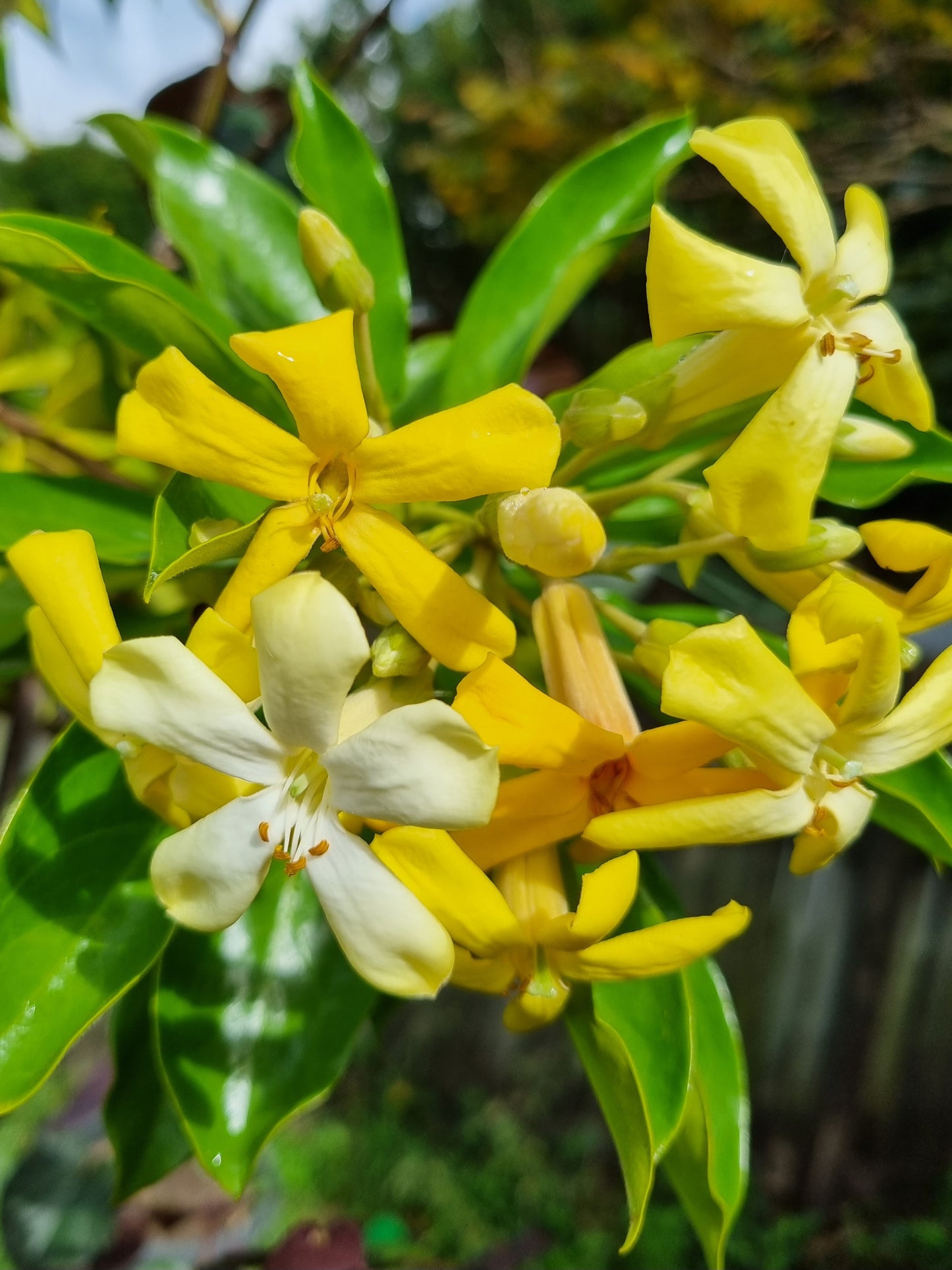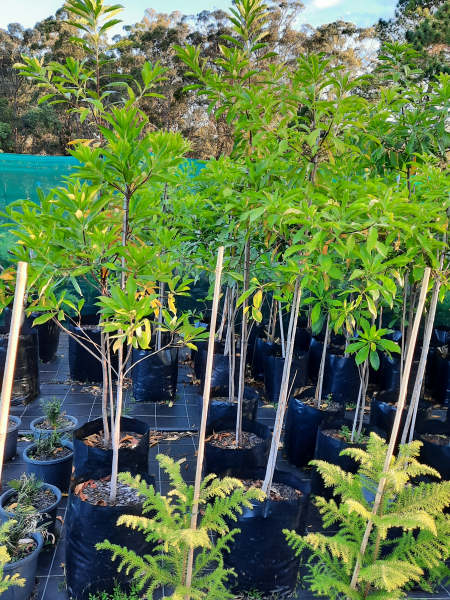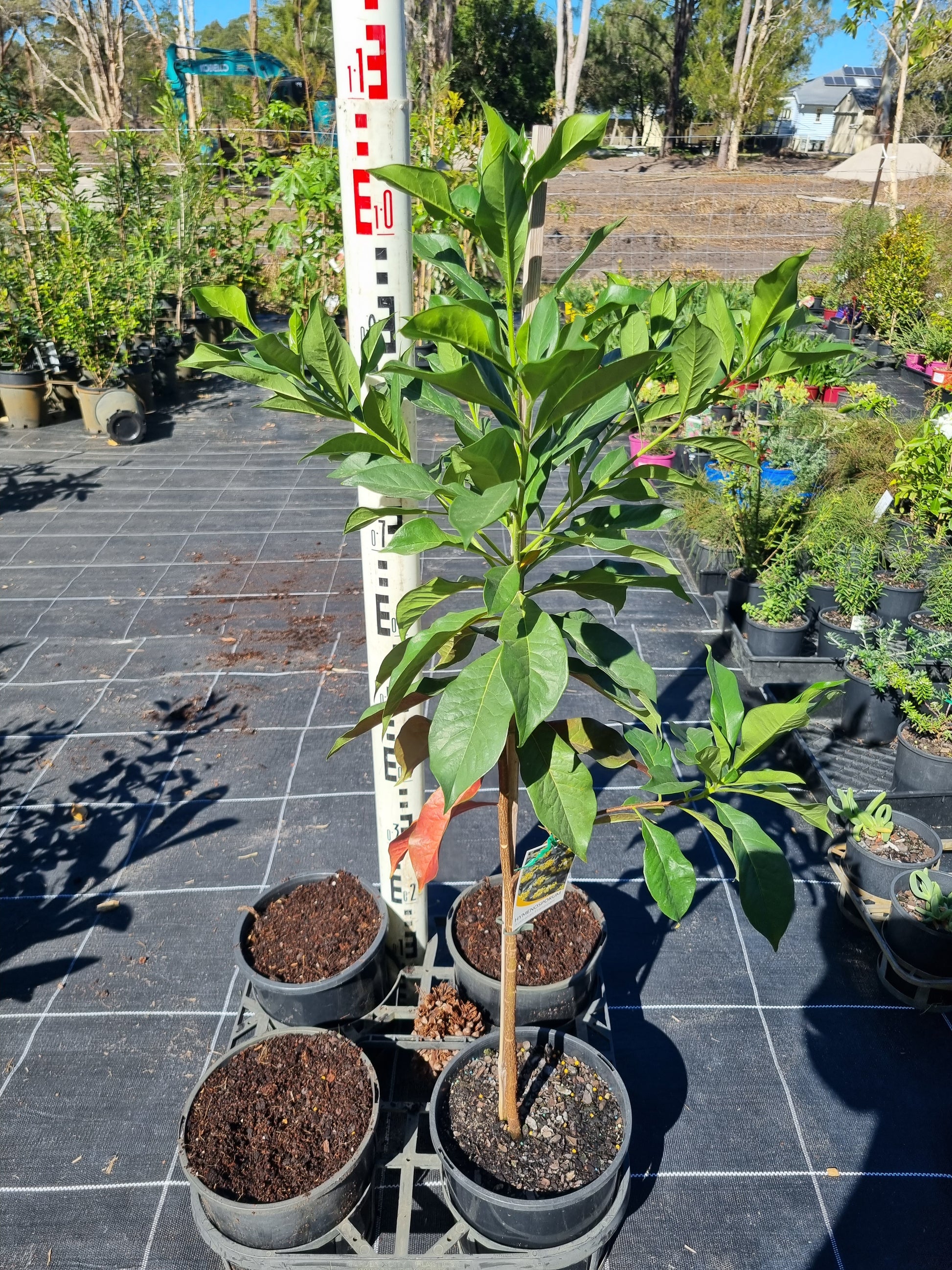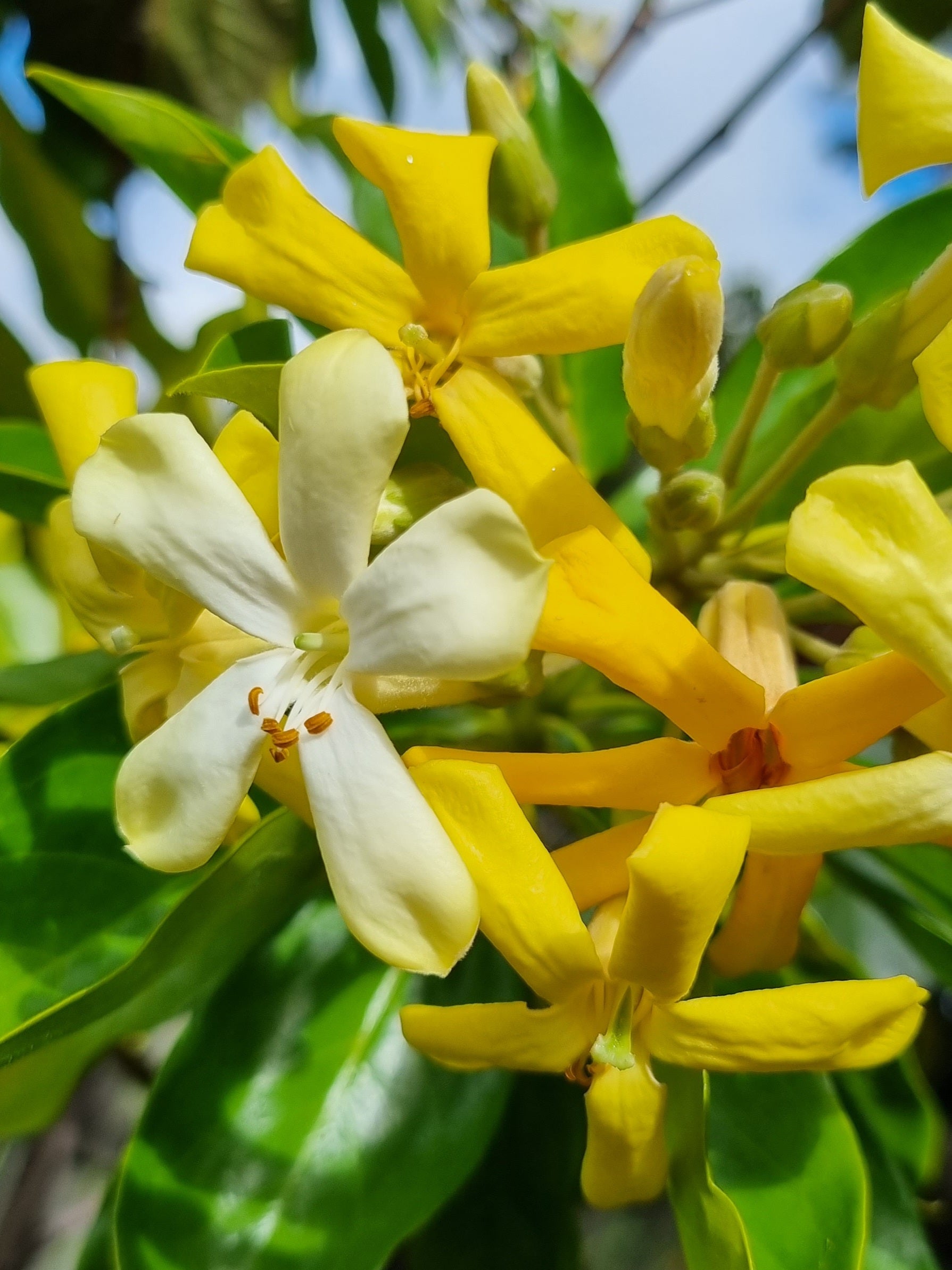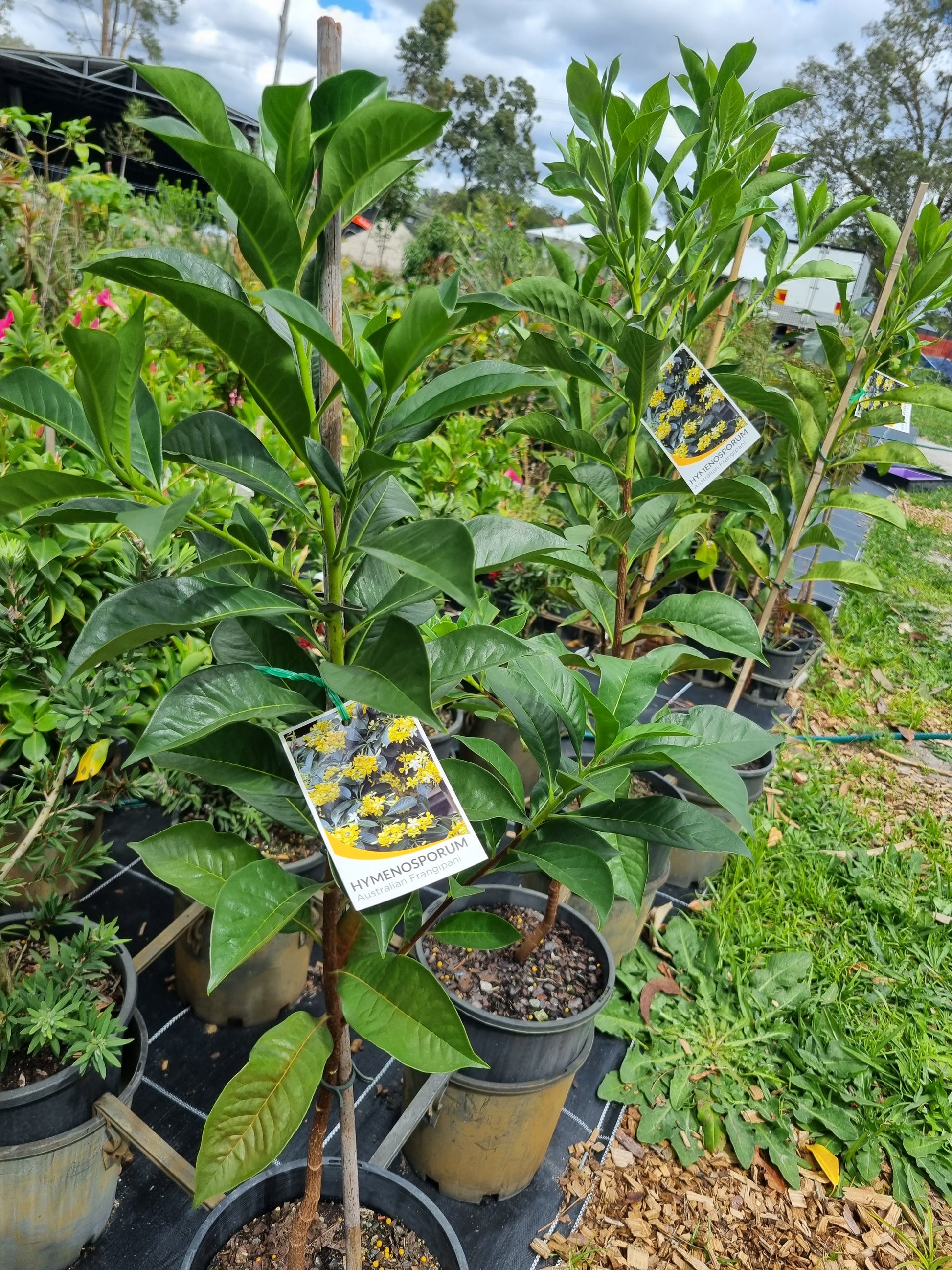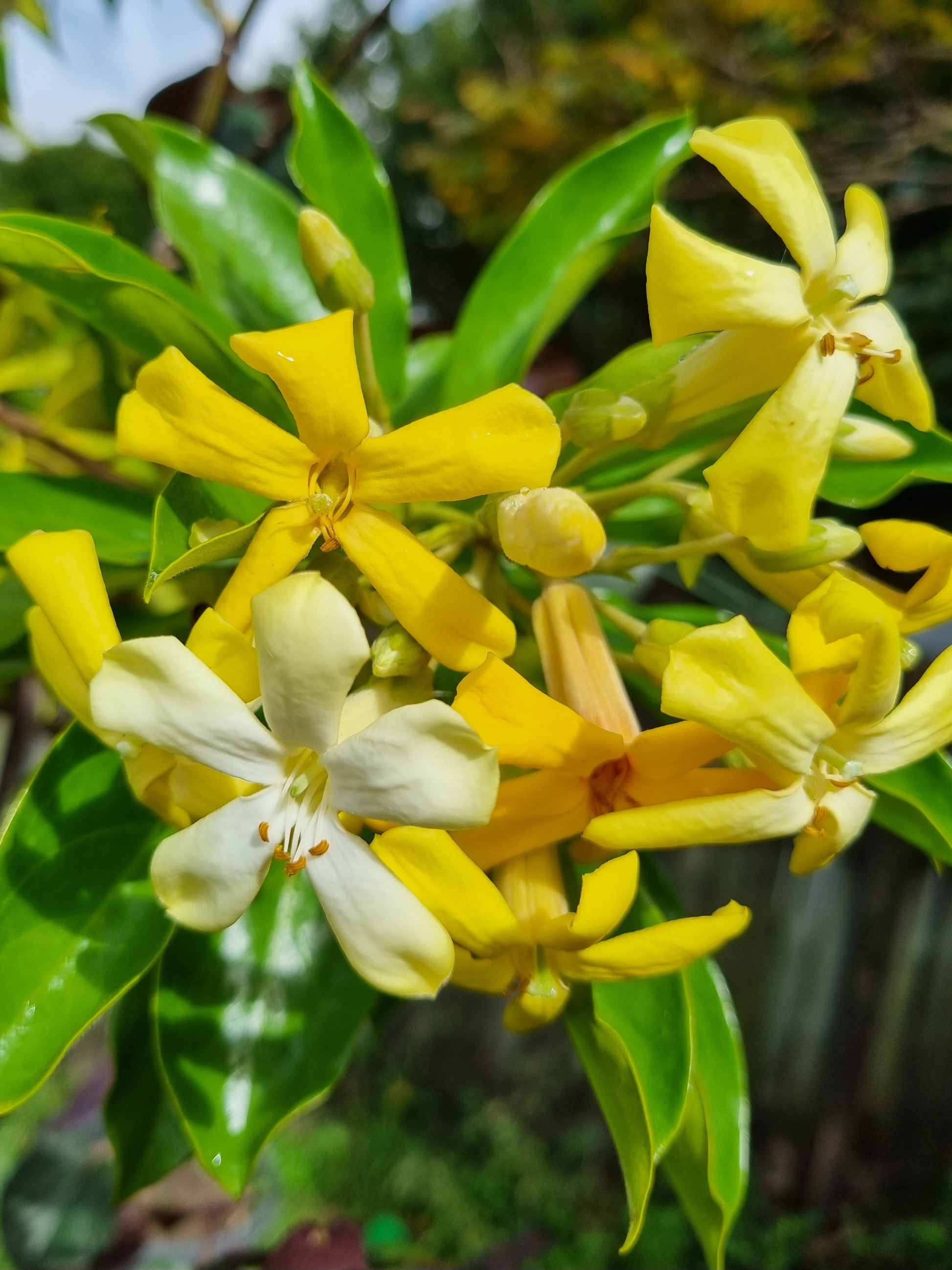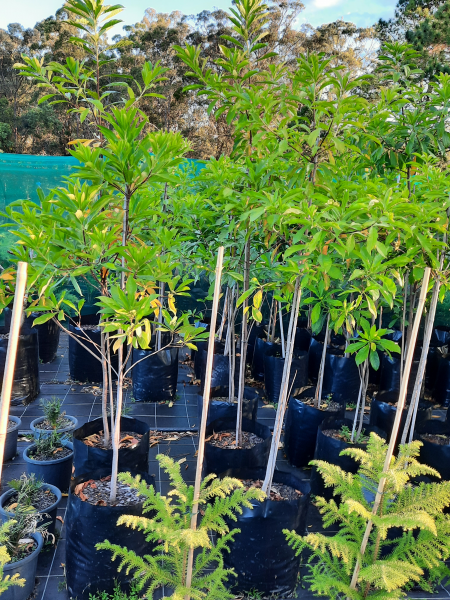Delivertree
Native Frangipani - Hymenosporum flavum
Native Frangipani - Hymenosporum flavum
Couldn't load pickup availability
Native Frangipani is a medium-sized, evergreen Australian tree prized for its glossy foliage and clusters of creamy-yellow, highly fragrant flowers that fill the garden with a sweet perfume from early spring into summer. Its narrow, upright habit makes it perfect for small gardens, courtyards, and feature plantings.
Quick Overview:
- Common Name: Native Frangipani
- Botanical Name: Hymenosporum flavum
- Origin: Coastal brush forests of eastern Australia and New Guinea
- Height & Width: 5–10 m high × 3–4 m wide in cultivation
- Foliage: Glossy, dark green, lanceolate leaves
- Flowers: Creamy-yellow, frangipani-like clusters; intensely fragrant from early spring to early summer
- Position: Full sun to part shade
- Soil: Well-drained, moderately fertile soils; tolerates clay loam if drainage is good
- Tolerance: Moderate drought and light frost once established
- Maintenance: Low; responds well to light formative pruning
- Etymology: Hymenosporum derives from Greek “hymen” = membrane and “sporos” = seed, referring to its winged seeds; flavum is Latin for “yellow,” describing the flower colour
Detailed Description:
Hymenosporum flavum is the sole species in its genus, forming a straight trunk with whorled branches and a naturally tidy, columnar crown. New foliage emerges light green, maturing to a deep glossy green that provides year-round interest. In early spring the tree bursts into masses of creamy-white flowers that gradually age to buttery yellow, creating a two-tone display and releasing a sweet, heady perfume reminiscent of tropical frangipani (Plumeria). These nectar-rich flowers attract bees, butterflies, and other pollinators, adding ecological value to the landscape.
Though capable of 10 m in ideal conditions, Native Frangipani keeps a relatively narrow profile (3–4 m), making it suitable for urban gardens, streetscapes, and beside buildings where space may be limited. It thrives in full sun but tolerates light shade and performs best in well-drained soil with moderate moisture. Once established it is resilient to short dry periods and accepts light frost down to about –3 °C.
Growth and Maintenance:
- Watering: Keep evenly moist during the first 12 months; afterwards, water deeply during extended dry spells
- Fertilising: Apply a balanced slow-release fertiliser in spring to encourage lush foliage and strong flowering
- Mulching: Maintain a 5 cm organic mulch layer to retain soil moisture and suppress weeds
Pruning:
- Tree Form: Train a single central leader from a young age for best structure
- Symmetry: Selectively tip-prune long lateral shoots to balance the canopy and maintain a tidy, upright form
- Suckers: Rare; remove any water shoots or basal suckers promptly
Common Uses:
- Feature or specimen tree in lawns and courtyards
- Narrow screening or avenue planting
- Scented garden or subtropical themed plantings
- Small gardens where space is limited
Planting Benefits:
- Year-round Appeal: Evergreen canopy provides constant colour and shade
- Fragrant Display: Massed creamy-yellow blooms perfume the garden in spring and early summer
- Pollinator Friendly: Flowers attract bees, butterflies, and other beneficial insects
- Compact Form: Narrow growth habit suits tight spaces without heavy pruning
- Low Maintenance: Minimal care needed once established, ideal for easy-care landscapes
Share
